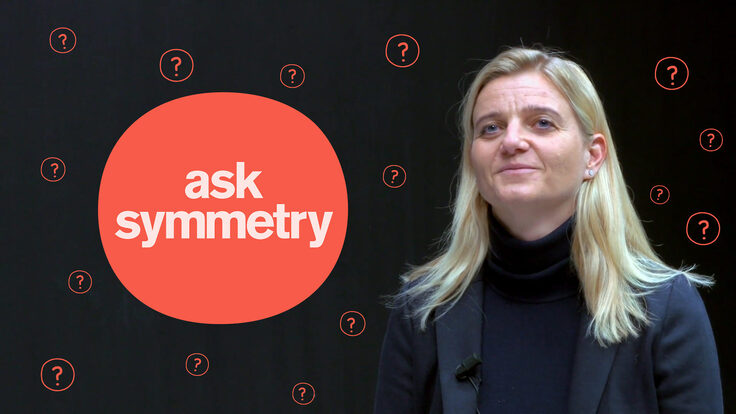
Fermilab employees like rare events. They search for rare interactions of particles and attempt to create rare particles such as the theorized Higgs boson.
But sometimes, even for Fermilab employees, enough is enough.
Fermilab always has been a magnet for severe weather. The laboratory sits near a tornado-prone swath of Illinois and its 6800 acres of prairie and mostly low-level buildings offer little to slow or divert high winds.
Employees practice for tornadoes, and take the weather in stride, but last year, a series of rare weather occurrences--a winter tornado and a straight line of wind storms--struck near Fermilab reminding employees that the uncertainty principle doesn't just work in physics. Anything not forbidden by a quantum rule that can happen will happen. So be ready.
In April, Chicago icon television meteorologist Tom Skilling (photo above) and several National Weather Service experts from regional offices throughout the nation converged on Fermilab for a talk to more than 3000 weather buffs.
During the Severe Weather Seminar, experts analyzed last year's storm data and offered tips on how to stay safe that apply to you no matter where you live.
The seminar, in its 28th year, serves as an example of the laboratory's commitment to serving the community. You can learn more about the history of the seminar.
 Chad Cowan, a weather enthusiast who spoke at the event, created a storm chaser DVD to raise money for the victims of last May's Greensburg, Kansas, twister. You can see a sample of the video Storms of 2007 below.
Chad Cowan, a weather enthusiast who spoke at the event, created a storm chaser DVD to raise money for the victims of last May's Greensburg, Kansas, twister. You can see a sample of the video Storms of 2007 below.
Basic safety tips apply to all types of tornadoes. You should seek cover in something concrete, sit against a sturdy object, and stay away from windows. Cover yourself with a blanket to avoid the glass dust created by exploding windows. The deadliest and longest lasting tornadoes signal their presence with a low wall of clouds close to the ground. The worst of the worst storms, F5s like the one that hit Greensburg last May, occur only once in 7000 tornadoes.
One of the greatest keys to survival is knowing what to believe and what not to believe about severe weather.
The not here myth:
Ed Fenelon, of the Chicago NWS, said the best way to stay safe is to get past the myth that severe tornadoes only happen in places like Oklahoma. On average, once every 10 years an F3 or F4 category tornado hits the Chicagoland area.
Last August, a strong tornado was sighted in Chicago near Lake Michigan but died out before it caused damage. Had it continued, its path would have crossed Fermilab, several major interstate highways, an O'Hare Airport terminal, and Allstate Arena, causing immense damage.
Be prepared, Fenelon warned.
When storm season means nothing:
In the Midwest, tornado probability spikes the highest in April followed by May and June. A slowdown occurs in July followed by an upswing in August and again in March. But tornadoes sometimes forget the date.
Spring-like conditions in winter and moderately strong La Niña conditions, which produce ice storms, forge tornadoes.
Although, mid-winter tornadoes rarely appear--the last one in Illinois was in 1950 and in Wisconsin in 1967-- the conditions that accommodate them are occurring more frequently. Winter tornadoes also pack a bigger punch than their spring cousins, with at least F2 super cell intensity, said Jim Allsopp, of the NWS of Chicago.
To predict the unexpected, Allsopp said to look out for rapidly increasing wind speeds heading into an area of ample moisture, with warm surface air of at least 50 degrees.
Those were the conditions that let to the three tornadoes on January 7, 2007, that ripped through northern Illinois and Southern Wisconsin, injuring 19 people. The strongest of the three tornadoes reached winds of 165 mph.
When a storm trumps a tornado:
On August 7, 2007, a series of powerful wind and thunderstorms raged through the area near Fermilab. The National Weather Service issued a severe thunderstorm warning for the area. Many people assumed that signaled a mild storm. Not Fermilab officials. They ordered employees to take shelter. That was the correct move, said Gino Izzi, of the NWS Springfield, Missouri, office.
"Just because it is not a tornado doesn't mean it is not something to be taken seriously," Izzi said. "It doesn't have to spin to kill."
The storm, called a derecho, lacked the circular spin of a tornado but had wind speeds of 80 to 100 mph near the laboratory. In many places on its half mile wide path from DeKalb County to eastern Cook County, it produced damage equivalent to a mid-level tornado. A West Chicago factory not far from the laboratory had its roof ripped off and dozens of workers were injured. The wind flipped cars in Chicago and falling debris killed one person. Tens of thousands of trees collapsed, damage to electrical infrastructure was the worst remembered since at least 1950, and a "wall of damage" emerged. The wind storms did more damage than a small tornado also spotted that day, Izzi said.
"We really can't diminish the power storms have," Izzi said.
While you should always take severe thunderstorm warnings seriously, you can get a feel for whether the storm will pack a bigger punch than usual by looking for a few wind storm ingredients: A large pool of moist air, a lack of clouds, and a sunny day heating up the atmosphere make unstable conditions for incoming storms. Strong winds of 60 mph that descend low in the atmosphere--10,000 feet that day--set the stage for the derecho.
View an excerpt of Chad Cowan's Storms of 2007 DVD on YouTube.






